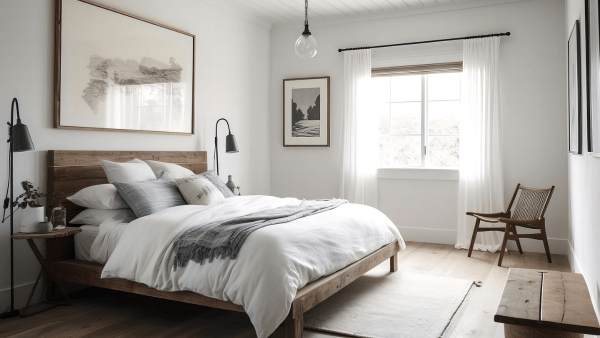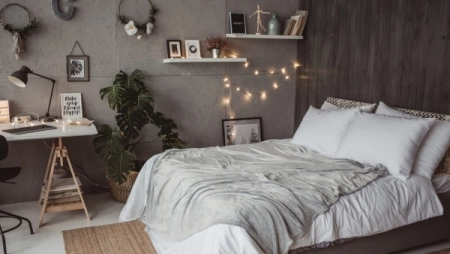A restful night’s sleep is the cornerstone of a healthy, productive life. Yet, many of us overlook one of the simplest ways to enhance our slumber: our bedroom design. Beyond plush pillows and cozy blankets, the design of your bedroom can profoundly impact the quality of your rest. From choosing the right colors and lighting to optimizing your mattress placement, discover how thoughtful design choices can help you achieve more restful nights.
Understand Your Circadian Rhythm
Before redesigning your space, it’s important to understand the factors that can influence your sleep and waking patterns. Your circadian rhythm is essentially your body’s internal clock that regulates your sleeping patterns and responds to light and dark cues, so you know when it’s time to go to bed and when it’s time to wake up.
Therefore, when designing your space, consider using dim, warm lighting at night to mimic a natural sunset and cue your body that it’s time to wind down.

Set An Appropriate Temperature
Studies suggest the optimal sleep temperature is between 65-68°F (18-20°C). As you fall asleep, your body temperature naturally drops. Therefore, a cooler room helps facilitate this, making it easier to fall asleep and stay asleep.
In general, it is important to note that high temperatures can disrupt sleep by causing discomfort, sweating, and waking up frequently throughout the night. Overheating can also suppress REM and reduce overall sleep quality. On the other hand, if the room is too cold, you might struggle to fall asleep or stay asleep due to discomfort or shivering.
Choose Calming Colors and Decor
Opt for calming, neutral colors like soft blues, greens, or grays when designing your space. These colors have been shown to promote relaxation. If you prefer more vibrant colors, consider incorporating them as accents rather than a primary wall color. Use them in small doses through accessories like throw pillows, artwork, or rugs.

Arrange Furniture Thoughtfully
Place your bed where you can see the door but aren’t directly in line with it. This position can reduce stress and create a sense of security. Similarly, you might not include a desk or workspace in your room, as it can provoke stress associations with the one place you hope to achieve peace and relaxation. If possible, also keep TVs, computers, and other electronic devices out of the bedroom to minimize distractions and blue light exposure before bed.
Opt For Comfortable Bedding
Choose a mattress and pillows that best support your sleeping posture. Many people suffer from sleepless nights due to inadequate mattresses, so it’s important to research beforehand to see what works best for you. A medium-firm mattress is often recommended for most people.
Integrating these elements into your bedroom design allows you to create an environment that supports natural sleep patterns, improves sleep quality, and enhances your overall well-being. Sweet dreams!
Are you looking to enter the market this season? Give us a call today! One of the experienced real estate agents at Zoocasa will be more than happy to help you through the exciting home-buying process.













